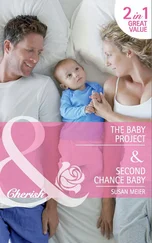For more on personality and reward seeking, see Philip J. Corr, ed., The Reinforcement Sensitivity Theory of Personality (New York: Cambridge University Press, 2008) . Also see C. Davis, K. Patte, R. Levitan, C. Reid, S. Tweed, and C. Curtis, “From Motivation to Behaviour: A Model of Reward Sensitivity, Overeating, and Food Preferences in the Risk Profile for Obesity,” Appetite 48 (2007): 12-19.
For an article on psychotherapy and cancer, see J. C. Coyne, B. D. Thombs, M. Stefanek, S. C. Palmer, “Time to Let Go of the Illusion That Psychotherapy Extends the Survival of Cancer Patients: Reply to Kraemer, Kuchler, and Spiegel,” Psychological Bulletin 135, no. 2 (2009): 179-82.
The J. D. Salinger quote is from Raise High the Roof Beam, Carpenters and Seymour: An Introduction (Boston: Little, Brown, 1959), 88.
For one of our studies of cheerfulness and longevity, see L. R. Martin, H. S. Friedman, J. S. Tucker, C. Tomlinson-Keasey, M. H. Criqui, and J. E. Schwartz, “A Life Course Perspective on Childhood Cheerfulness and Its Relation to Mortality Risk,” Personality and Social Psychology Bulletin 28 (2002): 1155-65.
Anne Harrington provides a relevant history of mind-body matters in The Cure Within: A History of Mind-Body Medicine (New York: W. W. Norton, 2008).
The average person tends to rate his or her risk as below average. For further discussion of related matters, see N. D. Weinstein, “Exploring the Links between Risk Perceptions and Preventive Health Behavior,” in Social Psychological Foundations of Health and Illness , ed. J. Suls and K. Wallston, 22-53 (Oxford, England: Blackwell, 2003).
For a study of aging and positive feelings, see M. Mather and L. Carstensen, “Aging and Motivated Cognition: The Positivity Effect in Attention and Memory,” Trends in Cognitive Sciences 9 (2005): 496-502.
You can read more about Dr. Vaillant’s study of the Harvard men in G. E. Vaillant, Aging Well: Surprising Guideposts to a Happier Life from the Landmark Harvard Study of Adult Development (Boston: Little, Brown, 2002).
For an overview of the Nun Study, see David Snowdon’s Aging with Grace: What the Nun Study Teaches Us about Leading Longer, Healthier, and More Meaning ful Lives (New York: Bantam, 2002).
For more information on the first study we mention on the protective effect of neuroticism, see A. E. Korten, A. F. Jorm, Z. Jiao, L. Letenneur, P. A. Jacomb, A. S.Henderson, H. Christensen, and B. Rodgers, “Health, Cognitive, and Psychosocial Factors as Predictors of Mortality in an Elderly Community Sample,” Journal of Epidemiology and Community Health 53 (1999): 83-88. The second study, of (older) Medicare patients, is A. Weiss and P. T. Costa, Jr., “Domain and Facet Personality Predictors of All-Cause Mortality among Medicare Patients Aged 65 to 100,” Psychosomatic Medicine 67 (2005): 724-33.
For a good relevant discussion of narcissism, see Jean M. Twenge, Generation Me: Why Today’s Young Americans Are More Confident, Assertive, Entitled—and More Miserable Than Ever Before (New York: The Free Press, 2006).
To read more about our initial study of catastrophizing, see C. Peterson, M. E. P. Seligman, K. H. Yurko, L. R. Martin, and H. S. Friedman, “Catastrophizing and Untimely Death,” Psychological Science 9 (1998): 127-30.
For more information on the risks associated with catastrophizing, see C. Peterson, S. F. Maier, and M. E. P. Seligman, Learned Helplessness: A Theory for the Age of Personal Control (New York: Oxford University Press, 1993).
For a brief biography of Dr. Douglas Kelley, see University of California: In Memoriam , 1959, “Douglas McGlashan Kelley, Criminology: Berkeley.” See also “Mysterious Suicide of Nuremburg Psychiatrist,” San Francisco Chronicle , p. A17, February 6, 2005. The New York Times article of January 2, 1958, is titled “U.S. Psychiatrist in Nazi Trial Dies,” p. 18.
For Dr. Tomlinson-Keasey’s study of these eight women see C. Tomlinson-Keasey, L. W. Warren, and J. E. Elliott, “Suicide among Gifted Women: A Prospective Study,” Journal of Abnormal Psychology 95 (1986): 123-30.
To read more about Dr. Shneidman’s investigation into the lives of these men who shot themselves, see E. Shneidman, “Perturbation and Lethality as Precursors of Suicide in a Gifted Group,” Life-Threatening Behavior 1 (1971): 23-45. See also Shneidman’s book The Suicidal Mind (New York: Oxford University Press, 1998).
The Cornell research on the regrets of the Terman participants is in N. Hattaiangadi, V. H. Medvec, and T. Gilovich, “Failing to Act: Regrets of Terman’s Geniuses,” International Journal of Aging and Human Development 40 (1995): 175-85.
David Lester did a follow-up study on the Terman suicides, matched controls, and childhood personality; see D. Lester, “Completed Suicide in the Gifted,” Journal of Abnormal Psychology 100 (1991): 604-6.
The study on adherence and health outcomes after heart attack is R. I. Horwitz, C. M. Viscoli, L. Berkman, R. M. Donaldson, S. M. Horwitz, C. J. Murray, D. F. Ransohoff, and J. Sindelar, “Treatment Adherence and Risk of Death after a Myocardial Infarction,” Lancet 336, no. 8714 (1990): 542-45.
For our breast-feeding study see D. L. Wingard, K. H. Criqui, S. Edelstein, J. Tucker, C. Tomlinson-Keasey, J. E. Schwartz, and H. S. Friedman,“Is Breast-Feeding in Infancy associated with Adult Longevity?” American Journal of Public Health 84 (1994): 1458-62.
For our study of early education and long life, see: M. L. Kern and H. S. Friedman, “Early Educational Milestones as Predictors of Lifelong Academic Achievement, Midlife Adjustment, and Longevity,” Journal of Applied Developmental Psychology 30 (2009): 419-30.
The Lee Cronbach details are from the “biographical memoirs” Richard J. Shavelson wrote up and published in the December 2003 Proceedings of the American Philosophical Society 147, no. 4.
For the complete results of our first study showing that parental divorce predicted mortality risk years into the future see J. E. Schwartz, H. S. Friedman, J. S. Tucker, C. Tomlinson-Keasey, D. L. Wingard, and M. H. Criqui, “Sociodemographic and Psychosocial Factors in Childhood as Predictors of Adult Mortality,” American Journal of Public Health 85, no. 9 (1995): 1237-45.
Our follow-up study, investigating the reasons why parental divorce is so important to later mortality risk, was published as J. S. Tucker, H. S. Friedman, J. E. Schwartz, M. H. Criqui, C. Tomlinson-Keasey, D. L. Wingard, and L. R. Martin, “Parental Divorce: Effects on Individual Behavior and Longevity,” Journal of Personality and Social Psychology 73 (1997): 381-91.
For a study on parental divorce and cancer see K. Hemminki and B. Chen, “Lifestyle and Cancer: Effect of Parental Divorce,” European Journal of Cancer Prevention 15, no. 6 (2006): 524-30.
Читать дальше











